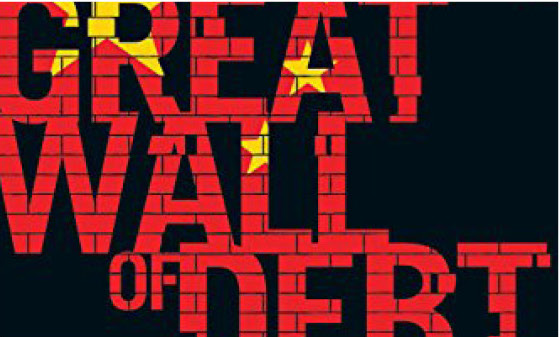The China Project Book List — sort by genre: Business and Tech
Sort by genre:
Culture/Society/Memoir | Literature | History | Politics | Business/Tech
Sort by time period of primary subject matter:
Ancient and Imperial China | Republican Era to 1949 | Mao to Tiananmen | 1990s to Pre-Olympics | 2008-Present
~
86. China’s Great Wall of Debt: Shadow Banks, Ghost Cities, Massive Loans, and the End of the Chinese Miracle
Dinny McMahon (Houghton Mifflin Harcourt, 2018)
Making China’s complex and shadowy debt-fueled economy engaging to the ordinary reader is no easy task, but Dinny McMahon, a veteran financial reporter, does just that. One of the ways he cuts through the abstruse is through characters he’s met over the years: There are baijiu dealers, ambitious local politicians, despairing architects, and more, all offering a human face to the world of unsecured loans and peer-to-peer lending. McMahon also addresses ghost cities, state monopolies, and a manufacturing boom that has simultaneously generated huge prosperity and created what he sees as economic time bombs. His forecasts are gloomy, but there have already been a number of incidents, such as last year’s P2P lending scandal, that indicate his insights should be taken seriously. All together, China’s Great Wall of Debt is a slim economic treatise and lively reader’s guide to China’s contemporary economy.
— Amy Hawkins
81. In Line Behind a Billion People: How Scarcity Will Define China’s Ascent in the Next Decade
Damien Ma and William Adams (Pearson FT Press, 2013)
Educators should put this excellent and highly readable book on their syllabi. Organizing their analysis of China’s economics, politics, society, and even culture around the theme of scarcity — scarcity of resources, scarcity of public goods, of cultural products, of ideological legitimacy — the authors suggest that China’s breakneck growth will actually end up holding China back. Peppered with sly and sometimes not-so-sly humor, and with gleeful pop culture references, this book will provide a solid foundation for understanding contemporary China.
— Kaiser Kuo
65. AI Superpowers: China, Silicon Valley, and the New World Order
Kai-Fu Lee (Houghton Mifflin Harcourt, 2018)
As a venture capitalist who has invested heavily in China’s technology sector, Kai-Fu Lee is hardly an unbiased observer of artificial intelligence’s development on either side of the Pacific. But it is also precisely because of his unique depth and breadth of involvement in both worlds that makes him uniquely qualified to write this book.
Lee covers a great deal in a relatively short space (less than 300 pages), from a brief history of AI technology to the basics of how AI systems operate, all in the context of China’s tech ecosystem and the entrepreneurs who made it happen. AI Superpowers takes a complicated topic and makes it both entertaining and easy for laypeople to understand. The future of AI might well be the future of the world; use this book to make your acquaintance.
— Elliott Zaagman
26. Four Hundred Million Customers
Carl Crow (Harper & Brothers, 1937)
When Missourian Carl Crow stepped onto the shore of Shanghai’s Bund in the summer of 1911, his only credo as he arrived was to “just have fun.” He did, and along the way saw a dynasty fall, a republic rise, warlords run rampant, and Shanghai boom. He launched newspapers, magazines, and an advertising agency, and was instrumental in creating the legendary Shanghai calendar girl. He learnt every trick of the China trade — got fooled plenty, dreadfully let down, became quite rich, was surprisingly supported, and made a lot of friends. He compiled all the lessons he learned — from protecting your valuable IP to understanding the uselessness of any paper contract; from guanxi to bribery; and most of all, the unrealistic dreams of the foreign businessman who, when they thought of China, saw only vast profits on the horizon and missed the poverty, local competition, and nonexistent infrastructure — and put them down in his 1937 book, Four Hundred Million Customers, which became a New York Times bestseller, was universally praised, and became the handbook for American business in China, translated into a couple of dozen languages. And then…war, revolution, Maoism. It was to be 50 years before Western business came back to China. Having largely forgotten Crow, they had to learn all those lessons again, the hard way. If only they’d looked at their grandfather’s bookshelves.
— Paul French
The China Project Book List. See all blurb writers.



